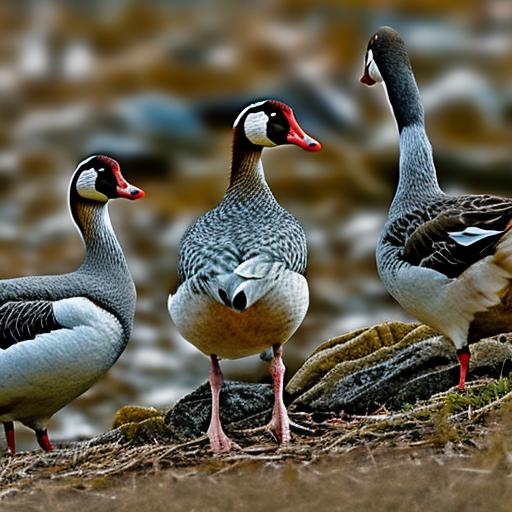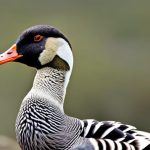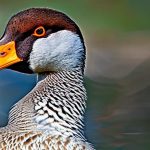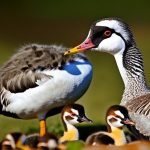Aggressive geese breeds are a topic of interest and concern for many people, especially those who encounter them in public spaces. Understanding their behavior and impact on the ecosystem is crucial for managing their populations and ensuring public safety. In this article, we will delve into the behavior of aggressive geese breeds, the common breeds found in North America, their physical characteristics, and the impact they have on the ecosystem. We will also discuss strategies for managing these breeds in public spaces and the role of conservation efforts in protecting them.
Key Takeaways
- Aggressive geese breeds are a common sight in North America.
- Understanding their behavior and physical characteristics is important for managing them in public spaces.
- Canada geese, snow geese, and brant geese are some of the most common aggressive breeds.
- Aggressive geese can have a negative impact on the ecosystem by displacing native species.
- Identifying aggressive geese breeds and implementing management strategies can help reduce risks and dangers associated with them.
Understanding the behavior of aggressive geese breeds
Geese can become aggressive for a variety of reasons, but one of the most common is their instinct to protect their territory or young. When geese feel threatened or perceive a potential threat to their offspring, they may exhibit aggressive behavior as a means of defense. Additionally, geese communicate with each other through vocalizations and body language, and this communication can sometimes escalate into aggression. For example, if one goose feels that its personal space is being invaded by another goose, it may respond aggressively to establish dominance.
Common aggressive geese breeds found in North America
There are several aggressive geese breeds commonly found in North America. One of the most well-known breeds is the Canada goose. These geese are known for their large size and distinctive black head and neck with white cheek patches. Another common aggressive breed is the snow goose, which is smaller in size but still exhibits aggressive behavior when threatened. Other breeds that can display aggression include the Brant goose and the Ross’s goose.
Physical characteristics of aggressive geese breeds
Aggressive geese breeds often have physical characteristics that contribute to their aggressive behavior. For example, Canada geese are large birds, with males weighing up to 14 pounds and females weighing up to 12 pounds. Their size alone can make them intimidating to other animals and humans. Additionally, their coloration, such as the black head and neck of the Canada goose, can serve as a warning signal to potential threats. These physical characteristics, combined with their territorial nature, make aggressive geese breeds formidable opponents.
The impact of aggressive geese breeds on the ecosystem
Aggressive geese breeds can have a significant impact on the ecosystem. One of the main concerns is overgrazing. Geese feed on grasses and other vegetation, and their large numbers can lead to the depletion of food sources for other animals. This can disrupt the balance of the ecosystem and negatively impact other species. Additionally, geese can spread diseases such as avian influenza and E. coli through their droppings, which can contaminate water sources and pose a risk to humans and other animals.
How to identify aggressive geese breeds
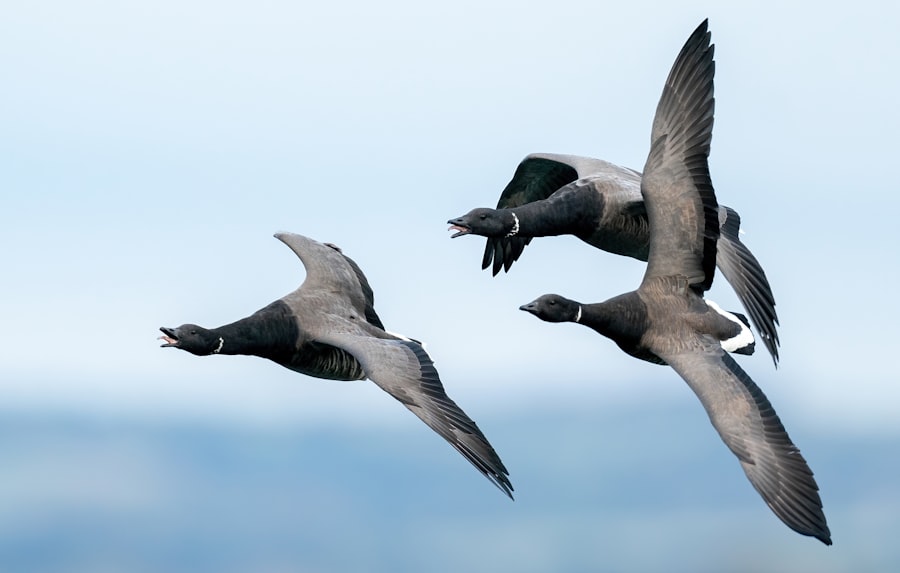
It is important to be able to identify aggressive geese breeds in public spaces in order to take appropriate precautions. One way to identify these breeds is by their distinctive calls. For example, Canada geese have a loud honking call that is easily recognizable. Additionally, observing their behavior can provide clues about their aggression levels. Aggressive geese breeds may exhibit territorial behavior, such as hissing or charging at intruders. Being able to identify these breeds can help individuals and authorities take appropriate action to manage their populations.
The risks and dangers associated with aggressive geese breeds
There are several risks and dangers associated with aggressive geese breeds. One of the main risks is attacks on humans and pets. Geese have been known to chase and bite humans who come too close to their nests or young. These attacks can cause injuries, especially if the person is caught off guard or unable to escape quickly. Additionally, aggressive geese breeds can pose a threat to pets, especially small dogs or cats that may be seen as potential prey.
Strategies for managing aggressive geese breeds in public spaces
Managing aggressive geese breeds in public spaces is crucial for ensuring public safety and maintaining the balance of the ecosystem. One strategy is to use deterrents, such as noise-making devices or visual deterrents, to discourage geese from nesting or congregating in certain areas. Another strategy is to limit their access to certain areas by installing fences or barriers. Additionally, educating the public about the risks and dangers associated with aggressive geese breeds can help individuals take appropriate precautions when encountering them.
The role of conservation efforts in protecting aggressive geese breeds
Conservation efforts play a crucial role in protecting aggressive geese breeds. Habitat restoration projects can provide suitable nesting and feeding grounds for these breeds, reducing their need to venture into public spaces. Additionally, population management strategies, such as egg addling or relocation programs, can help control their numbers and prevent overpopulation. However, it is important to balance conservation efforts with public safety concerns, as aggressive geese breeds can pose risks to humans and other animals.
Future prospects for studying aggressive geese breeds
There is still much to learn about aggressive geese breeds, and future research can provide valuable insights into their genetics and behavior. Understanding their genetic makeup can help researchers identify specific traits that contribute to aggression and develop targeted management strategies. Additionally, studying their behavior in different environments can provide insights into how they adapt and respond to changing conditions. This research is important for effectively managing their populations and protecting the ecosystem.
In conclusion, understanding and managing aggressive geese breeds is crucial for maintaining public safety and protecting the ecosystem. By understanding their behavior, identifying their physical characteristics, and implementing effective management strategies, we can coexist with these breeds while minimizing the risks they pose. Conservation efforts also play a vital role in protecting these breeds and ensuring their long-term survival. Continued research on aggressive geese breeds will further our understanding of their genetics and behavior, leading to more effective management strategies in the future.
If you’re interested in learning more about aggressive geese breeds and how to handle them, you might find this article on the incubation period for goose eggs helpful. Understanding the incubation process is crucial for successful breeding and can provide insights into the behavior of aggressive geese. Check out this informative article at https://poultrywizard.com/breeding-geese/what-is-the-incubation-period-for-goose-eggs/. Additionally, if you’re considering raising geese alongside chickens, it’s important to know what kind of coop is best for chickens. This article on poultrywizard.com provides valuable information on creating a safe and suitable environment for your feathered friends. Find out more at https://poultrywizard.com/keeping-chickens/what-kind-of-coop-is-best-for-chickens/. Lastly, if you’re curious about the egg-laying habits of geese, this article explores how many eggs geese typically lay. Understanding their reproductive patterns can help you better manage aggressive behavior. Discover more at https://poultrywizard.com/breeding-geese/how-many-eggs-do-geese-lay/.
FAQs
What are aggressive geese breeds?
Aggressive geese breeds are those that are known to exhibit territorial and protective behavior, often attacking humans or other animals that they perceive as a threat.
What are some examples of aggressive geese breeds?
Some examples of aggressive geese breeds include the Chinese Goose, the Embden Goose, and the Toulouse Goose.
Why do geese become aggressive?
Geese become aggressive for a variety of reasons, including protecting their territory, defending their young, or feeling threatened by humans or other animals.
How can I avoid being attacked by aggressive geese?
To avoid being attacked by aggressive geese, it is important to give them plenty of space and avoid approaching them or their nests. If you must pass by a group of geese, try to do so calmly and quietly, and avoid making sudden movements or loud noises.
What should I do if I am attacked by an aggressive goose?
If you are attacked by an aggressive goose, try to protect your face and eyes, and back away slowly. Do not try to fight the goose, as this will only escalate the situation. If you are seriously injured, seek medical attention immediately.
Meet Walter, the feathered-friend fanatic of Florida! Nestled in the sunshine state, Walter struts through life with his feathered companions, clucking his way to happiness. With a coop that’s fancier than a five-star hotel, he’s the Don Juan of the chicken world. When he’s not teaching his hens to do the cha-cha, you’ll find him in a heated debate with his prized rooster, Sir Clucks-a-Lot. Walter’s poultry passion is no yolk; he’s the sunny-side-up guy you never knew you needed in your flock of friends!

